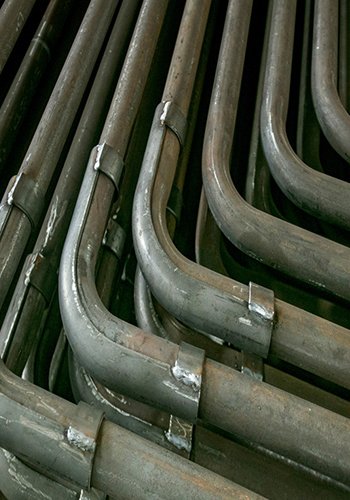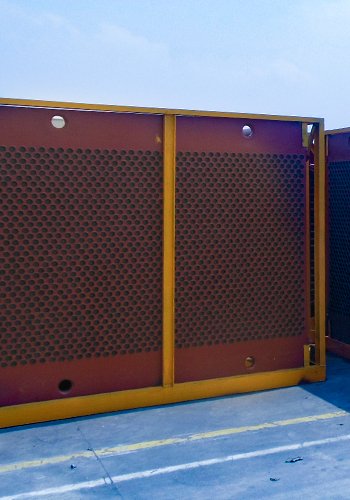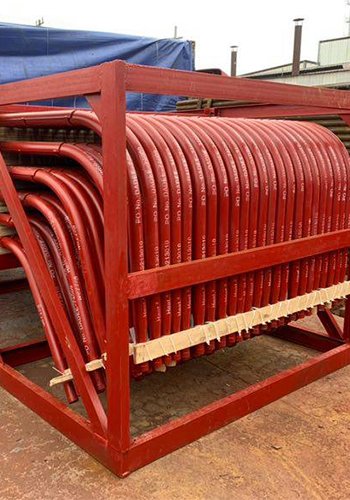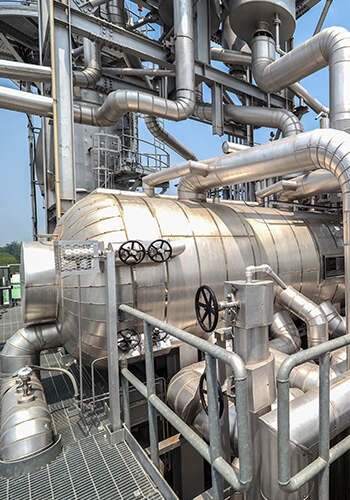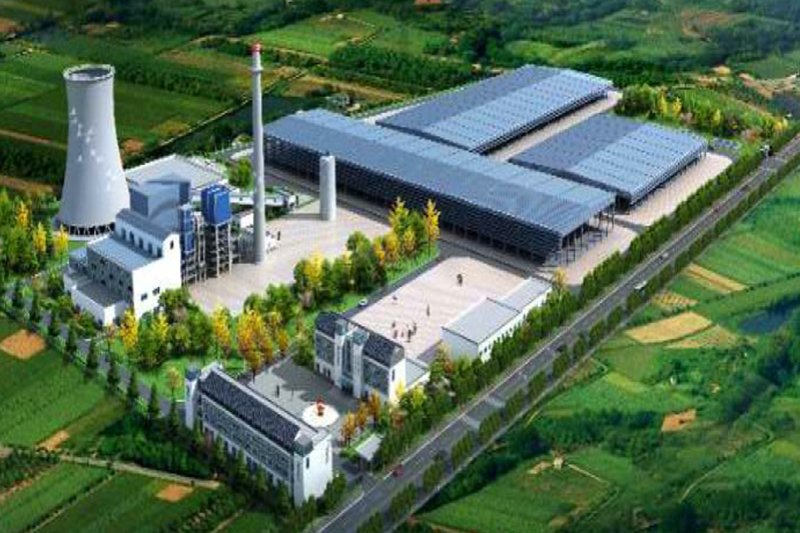The Circulating Fluidized Bed Boiler (CFB Boilers) has found extensive application in China since the 1990s and has garnered widespread adoption owing to its commendable environmental protection performance, streamlined system design, simplified combustion regulation, and robust adaptability to varying coal compositions. With an evolution spanning nearly three decades, this technology has established its prominence in co-generation establishments and autonomous power plants with capacities below 440 t/h. In recent times, domestic manufacturers of CFB Boilers have intensified their research and development endeavors, resulting in the operation of CFB Boilers that attain ultra-low emission standards for NOx concentrations.
An overview of the trajectory of domestic CFB Boilers development underscores a prevalent challenge encountered by enterprises, namely, the wear-and-tear of internal heating surfaces within the boiler, leading to tube ruptures and curtailing operational lifespans. However, through concerted efforts, the continuous operational cycle of domestic CFB Boilers has achieved noteworthy progress, now routinely spanning 6 months and, in certain instances, even extending to an impressive 3 years. This substantial enhancement in operational reliability reflects a significant stride forward.
A comprehensive evaluation of strategies to mitigate wear and prevent explosions within CFB Boilers reveals two primary approaches: active anti-wear technology and passive anti-wear technology.
Manifestations of Wear in CFB Boilers and their Underlying Mechanisms
The process of combustion within a Circulating Fluidized Bed (CFB) Boiler is inherently intricate, engendering multifarious forms of wear on its heating surfaces and refractory wear-resistant layers. Among these wear manifestations, three primary categories stand out: impact wear, micro-vibration wear, and scouring wear.
Impact Wear
Impact wear denotes instances where solid materials in the furnace flue gas stream impinge upon the heating surface at varying angles or perpendicular trajectories. This impact gives rise to collisions between the solid particles and the heating surface, leading to abrasion. Notably, the magnitude of wear is influenced by factors such as the angle at which flue gas and solid materials flow relative to the heating surface. Empirical analysis indicates that impact wear is most pronounced when the flow direction of flue gas and the wear layer wall form an angle of approximately 120°. Conversely, wear may be comparatively subdued when the angle is 90° or 180°.
Micro-Vibration Wear
Micro-vibration wear pertains to the erosion of heat transfer tubes’ walls resulting from vertical oscillations generated between the tubes and their supports. This type of wear commonly manifests in external heat exchangers.
Scouring Wear
Scouring wear materializes when solid materials in the boiler flue gas flow parallel to the heating surface (or tube bundle), thereby inducing erosion of the heating surface. This wear pattern is particularly prevalent in regions where the heating surface exhibits concave and convex topographies, subsequently fostering eddy currents that intensify the scouring effect.
In summation, the intricate combustion dynamics of CFB Boilers engender diverse wear mechanisms across heating surfaces and refractory layers. Understanding these wear forms and their respective underpinnings is crucial for effective mitigation and maintenance strategies.
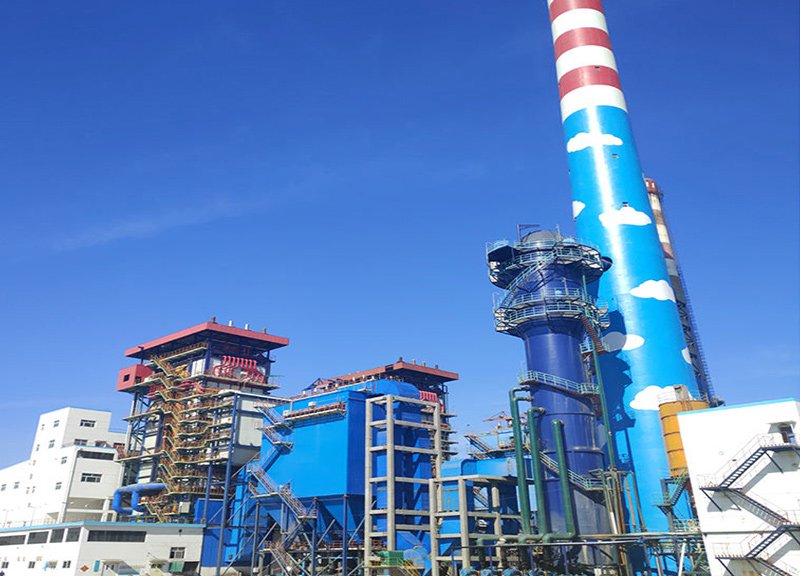
Reasons for Heating Surface Wear in CFB Boilers
1 Operational Factors
(1) Prolonged Overload Operation:
Sustained operation of CFB Boilers under overload and excessive coal input conditions significantly contributes to escalated wear and tear. This concern is particularly pronounced in smaller heating units where the boiler is frequently compelled to operate in overload mode to meet the heat demand of the external network. During such overload operation, there is a substantial increase in coal consumption and air volume, leading to elevated material concentrations within the furnace. This phenomenon is especially accentuated when dealing with high-coal-ash content. The resultant influx of flue gas and solid materials, including relatively larger particles, induces heightened wear and poses a significant threat to the durability of critical heating surfaces, notably the “four tubes.”
(2) Excessive Bed Pressure:
Inadequate monitoring and timely adjustment of bed pressure by operators can lead to excessively high or low bed pressure levels. When bed pressure becomes excessively high, the dense phase area within the combustion chamber elevates, causing an upward shift that intensifies wear on the upper furnace chamber. Furthermore, this condition facilitates the ingress of a greater volume of solid materials into the tail flue, exacerbating wear and tear.
(3) Coal Quality Characteristics:
The characteristics of the coal, beyond its ash concentration, exert a noteworthy influence on heating surface wear. Factors such as coal particle size upon entry into the furnace and its inherent hardness impact the rate of wear. Larger coal particle sizes correlate with increased heating surface wear, while greater coal hardness similarly contributes to wear.
(4) Flue Gas Flow Rate:
Arguably the most significant contributor to heating surface wear in CFB Boilers is the flue gas flow rate. A widely held perspective posits that the wear rate is directly proportional to the cubic power of the flue gas flow rate.
2 Equipment Maintenance
When compared to conventional pulverized coal furnaces, CFB Boilers exhibit heightened wear characteristics, necessitating a reinforced approach to equipment maintenance. Emphasis should be placed on comprehensive wear inspection and detection protocols. Moreover, stringent standards must be upheld for the maintenance and repair of heating surfaces. It is imperative to address potential issues promptly, as irregularities such as uneven welding or insufficiently polished water-cooled walls, subpar welding processes, and other related factors can induce wear and tear.
Furthermore, a systematic regimen of inspections and thickness measurements should be routinely conducted on susceptible components, including but not limited to the “four tubes” and regions prone to wear, such as corners within the furnace area, the furnace exit smoke window area, cloth wind plates, hoods, and areas where screens penetrate the wall. Neglecting these crucial areas can also contribute to the deterioration of heating surfaces.
3 Additional Factors
Numerous other contributors underlie the wear of a boiler’s heating surface. These include the omission of appropriate anti-wear materials, inadequate consideration of wear-prone sections within the boiler due to an absence of rational structural design, and the oversight of specialized surface treatments for heating surfaces. Each of these factors can independently or collectively contribute to the wear experienced by the boiler’s heating surface.
4 Hazards of Heating Surface Wear in CFB Boilers
The wear experienced by heating surfaces in CFB Boilers, though inevitable, gives rise to varying degrees of consequences that impact both the safety and economic aspects of the boiler’s operation.
1. Safety Implications
Light wear on the boiler’s heating surfaces induces changes in thermal stress and uneven force distribution across these surfaces. In more severe instances, this wear can lead to the rupture of crucial components like the “four tubes” or even necessitate the shutdown of the entire furnace and production processes. Particularly concerning is the potential leakage of water-cooled wall pipes, which, if not promptly or properly addressed, can escalate into a larger-scale incident, posing significant risks to the safety of personnel and equipment.
2. Economic Considerations
The repercussions of heating surface wear extend to the economic realm. When wear-related pipe bursts occur, a reduction in heat supply and power generation becomes imperative. This not only undermines the economic efficiency of the company but also mandates furnace shutdowns for repairs, entailing substantial investments of labor, materials, and finances to facilitate the boiler’s restart. Emergency repairs, including the labor-intensive task of slag removal, intensify the resource-intensive nature of these interventions. The halt in furnace operation not only impacts the company’s profitability to a certain extent but also exerts adverse effects on the boiler itself, culminating in a reduction of its overall lifespan.

Anti-Friction and Anti-Explosion Measures for Annular Fluidized Bed Boilers
Active Anti-Wear Technology: A Strategic Approach
Active anti-wear technology is primarily geared towards preventing the occurrence of heating surface wear or mitigating its impact. This multifaceted strategy entails the following key measures:
- Boiler Design and Material Control:
Through meticulous boiler design, precise control over the concentration of materials across all furnace zones, and regulation of material movement velocities can be achieved. The goal is to minimize or even eliminate wear-inducing effects on heating surface tubes caused by flue gas and materials. In areas where wear is inevitable, augmenting the wear layer thickness can offer protection to the heating surface. High material concentrations in heating surface regions can be addressed by implementing wear-resistant protective layers, effectively avoiding energy-related issues. - Combustion Adjustment:
Strategic adjustments in boiler combustion play a pivotal role in managing material concentrations within the furnace and controlling the speed of flue gas and material movement. While structural modifications are challenging for operational CFB Boilers, wear reduction or prevention can still be achieved through precise combustion adjustments. Operators focus on balancing safe boiler operation with economic considerations, thereby attenuating wear and tear on the furnace’s heating surfaces.
- Primary and Secondary Air Ratios:
Optimizing primary air levels ensures proper fluidization of bed materials and maintains stable bed temperatures. Excessive primary air pressure and volume can lead to vigorous material movement, heightening wear. Secondary air, introduced slightly downward, counteracts the rise of flue gas material particles, mitigating wear in specific zones. Maintaining a balanced primary-to-secondary air ratio around 4:6 is recommended for rated load operation. Minimizing primary air volume and maintaining boiler oxygen levels within 2% assist in reducing material concentration and flue gas flow, ultimately weakening wear effects. - Furnace Coal Particle Size:
Control over the size of coal particles entering the furnace is critical. Larger coal particle sizes require higher primary air volume and pressure, intensifying heating surface wear. It is advisable to maintain coal particle sizes within the 10 mm range. Regular screening analysis and adjustments of coal particle size ensure optimal conditions. - Furnace Outlet Negative Pressure:
The magnitude of negative pressure at the furnace outlet directly impacts the rise height and speed of flue gas and material. Excessive negative pressure exacerbates heating surface wear, increases heat loss, and escalates energy consumption. Proper control and maintenance of an appropriate furnace load aid in managing negative pressure effects. - Internal Smoke and Material Balance:
Furnace flue gas and material distribution imbalances result in unilateral wear on water-cooled wall pipes and heating surface pipes. Monitoring and analyzing temperature and pressure imbalances across the furnace help identify this issue. Ensuring uniform coal feeder feeding and precise monitoring of air distribution (both primary and secondary) maintain a balanced flue gas and material distribution, reducing uneven wear.
It is essential to recognize that the successful implementation of active anti-wear technology necessitates a comprehensive grasp of boiler operational dynamics and meticulous control over various parameters. In cases where structural redesign is unfeasible, operators’ vigilant combustion adjustments, which balance safety and economic considerations, form a cornerstone in the endeavor to mitigate heating surface wear and tear on the furnace.
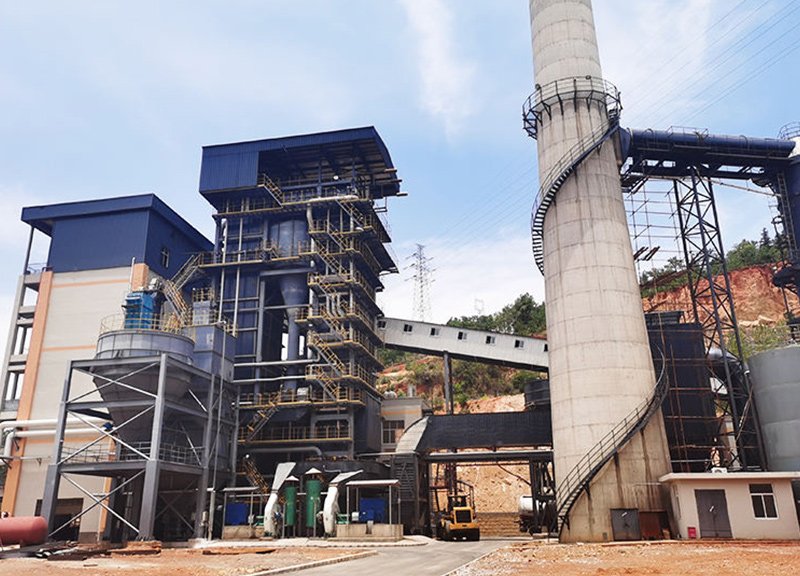
Passive Anti-Friction Technology
In contrast to active anti-wear technology, passive anti-friction technology focuses on measures taken proactively to prevent wear. This approach centers on the following key strategies:
- Precise Inspection and Detection during Maintenance:
When a boiler undergoes scheduled maintenance, meticulous inspections and assessments are conducted on heating surface wear areas and various components. Based on the findings, a range of anti-wear layer measures is employed to counteract heating surface tube wear. - Anti-Friction Measures for Newly Installed CFB Boilers:
For newly commissioned CFB Boilers operating for a period of 3 to 6 months or up to a year, comprehensive inspections and maintenance are essential. A thorough inspection and thickness measurement of every water-cooled wall tube is carried out, ensuring meticulous attention to detail. A record of the time of measurement, tube numbers, part elevations, and wall thickness data is diligently maintained. A systematic approach involves monitoring the thickness every 2 meters along the elevation direction. Any significant thinning of wall thickness warrants continued monitoring until normal thickness is achieved. Identifying worn sections of the water-cooled wall pipes during this inspection phase is crucial for subsequent anti-wear measures. - Addressing Thinning Parts of the Water-Cooled Wall:
Thin sections of the water-cooled wall attributed to wear are meticulously addressed through processes such as repair welding, grinding, and pipe replacement. Localized and individualized wear can be rectified using these techniques. Regional and widespread wear necessitates a comprehensive analysis of the underlying cause, followed by appropriate treatment. Widespread wear is often prominent near the furnace chamber exit, typically characterized by dominant single-side wear. Welding anti-wear tiles or protective plates onto the fins of the worn side can shield the water-cooled wall tubes in this region from further wear development. - Preventing Wear in the Dense Phase Area of the Water-Cooled Wall:
This is accomplished primarily by installing plastic or cast material anti-wear layers on the water-cooled wall tubes. Regular maintenance involves thorough checks of the anti-friction layer. Any abnormal cracks, bulging, looseness, or severe wear (thin anti-friction layer, exposed nails) should be promptly addressed through localized removal and repair. Specific areas prone to issues, such as back to the mouth, slag discharge mouth, coal drop mouth, and second wind mouth, require focused attention. An effective method involves extending the outer edge by approximately 2 cm during the plastic construction, preventing damage and detachment of the anti-abrasion layer along the mouth’s edge, thereby safeguarding the water-cooled wall pipes. - Anti-Friction Measures for Other Large Areas of the Water-Cooled Wall:
To combat extensive wear in other sections of the water-cooled wall, the installation of anti-wear beams or metal anti-wear grilles proves most effective.
- Metal Anti-Wear Grille:
Metal anti-wear grilles prevent water-cooled wall tube abrasion caused by wall flow and lateral movement. These grilles serve a dual purpose, thwarting abrasion from both wall flow and transverse movement of flue gas material. This mature and widely adopted technology enhances the heat transfer efficiency of the water-cooled wall.
Passive anti-friction technology, through a meticulous and proactive approach, plays a pivotal role in extending the lifespan and optimizing the performance of CFB Boilers.
Preventing Surface Wear in Screen-Type Heat Exchangers
Within the furnace chamber of CFB Boilers, screen superheaters or screen reheaters often reside, constituting critical components requiring effective anti-wear strategies. These components are typically crafted from alloy steel, renowned for its robust anti-wear properties. However, special attention is warranted for the lower windward side, which tends to experience wear-related challenges.
- Windward Side Protection:
The windward side, particularly the lower portion, is a focal point for wear prevention. To mitigate wear, a plastic anti-friction layer is incorporated into the windward side’s design. Regular daily maintenance includes meticulous checks of the plastic anti-friction layer’s condition. Any instances of damage or wear should be promptly addressed through timely repairs. - Enhanced Protection with High-Temperature-Resistant Metal Tiles:
To bolster the protective measures for the windward side, a supplementary layer of high-temperature-resistant metal anti-friction tiles can be installed on the outermost tube before applying the plastic anti-friction layer. This approach reinforces the screen’s ability to withstand wear and enhances the longevity of the protective measures. - Addressing Bending Deformation:
Bending deformation, particularly along the longitudinal direction of the screen, is a common occurrence. During maintenance, a detailed thickness measurement of the pipe wall should be performed to accurately assess the extent of deformation. This step aids in identifying any potential vulnerabilities and ensures the overall integrity of the screen-type heat exchanger.
Through a combination of vigilant maintenance, reinforced protective layers, and systematic assessments, screen-type heat exchangers can be effectively safeguarded against wear, contributing to the extended performance and durability of CFB Boilers.
Tail Heating Surface Protection
The tail heating surface is positioned within the flue after the separator, primarily exposed to fine ash within the flue gas. While wear is relatively mild, specific areas require focused attention. Notably, the dilatancy pipe at the separator outlet and upper sections of the tail flue’s flue gas steering components require anti-wear measures. Regular thickness measurements aid in identifying wear, enabling timely interventions. For the dilatancy pipe, metal anti-wear tiles can be promptly installed to shield against wear. In the flue gas steering zone, applying a plastic anti-friction layer provides suitable protection. To address wear in pipe rows, upgrading to higher-grade metal materials (such as alloy pipes) or installing wear-resistant metal tiles can enhance wear resistance. Particular emphasis should be placed on monitoring wear in elbow sections.
Protection of Furnace Chamber Manhole Doors and Measurement Points
Critical components such as manhole doors in the furnace and at separator inlet and outlet flues, as well as water-cooled wall pipes surrounding these areas, warrant thorough examination. In instances of wear and tear, an effective approach involves adding welded anti-wear bars to the pipes, bolstering wear resistance. Pressure and temperature measurement points within the furnace chamber and flue sections are susceptible to wear. Here, a localized addition of plastic wear layers serves as a pragmatic solution to counter wear and ensure the sustained integrity of these components.
By diligently implementing these preventive measures, wear-related challenges in tail heating surfaces and shaped components can be effectively managed, enhancing the overall performance and durability of CFB Boilers.
The efficacy of anti-friction and anti-explosion measures applied to the heating surface tubes is pivotal for ensuring the prolonged and uninterrupted operation of the CFB Boilers. Achieving desirable results necessitates a dual-pronged approach encompassing both operational practices and diligent maintenance strategies.
Boiler operators play a crucial role in optimizing anti-friction and anti-explosion efforts through meticulous combustion adjustments. By judiciously fine-tuning coal and primary and secondary air ratios, operators can minimize wear and tear caused by flue gas and materials on the heating surface. This strategic adjustment mitigates the adverse effects of friction and explosion-related factors, contributing to enhanced performance and longevity.
Equally vital are the contributions of boiler maintenance personnel, who undertake comprehensive inspections of the heating surface. Timely identification of wear-prone sections allows for swift and efficient implementation of robust anti-wear measures. These measures are designed to thwart heating surface tube wear and safeguard against potential damage. By consistently adopting effective and reliable anti-wear strategies during maintenance, the integrity of the heating surface is preserved, bolstering the overall operational reliability.
Collectively, the concerted efforts of both boiler operators and maintenance personnel in these two critical areas — operational adjustments and thorough maintenance practices — hold the key to significant improvements in the continuous and long-term reliable operation of CFB Boilers.
[Source] Zeng jianca, Anti-friction and anti-explosion countermeasures for CFB Boilers, Energy and Environment 2023[3]:63-65
DHB Boiler
Discover The Superior Quality And Cutting-Edge Technology Of DHB Boilers. Explore Our Range Of Biomass Boilers, Waste Heat Boilers, And More. Take Your Industrial Operations To New Heights With DHB Boiler.
